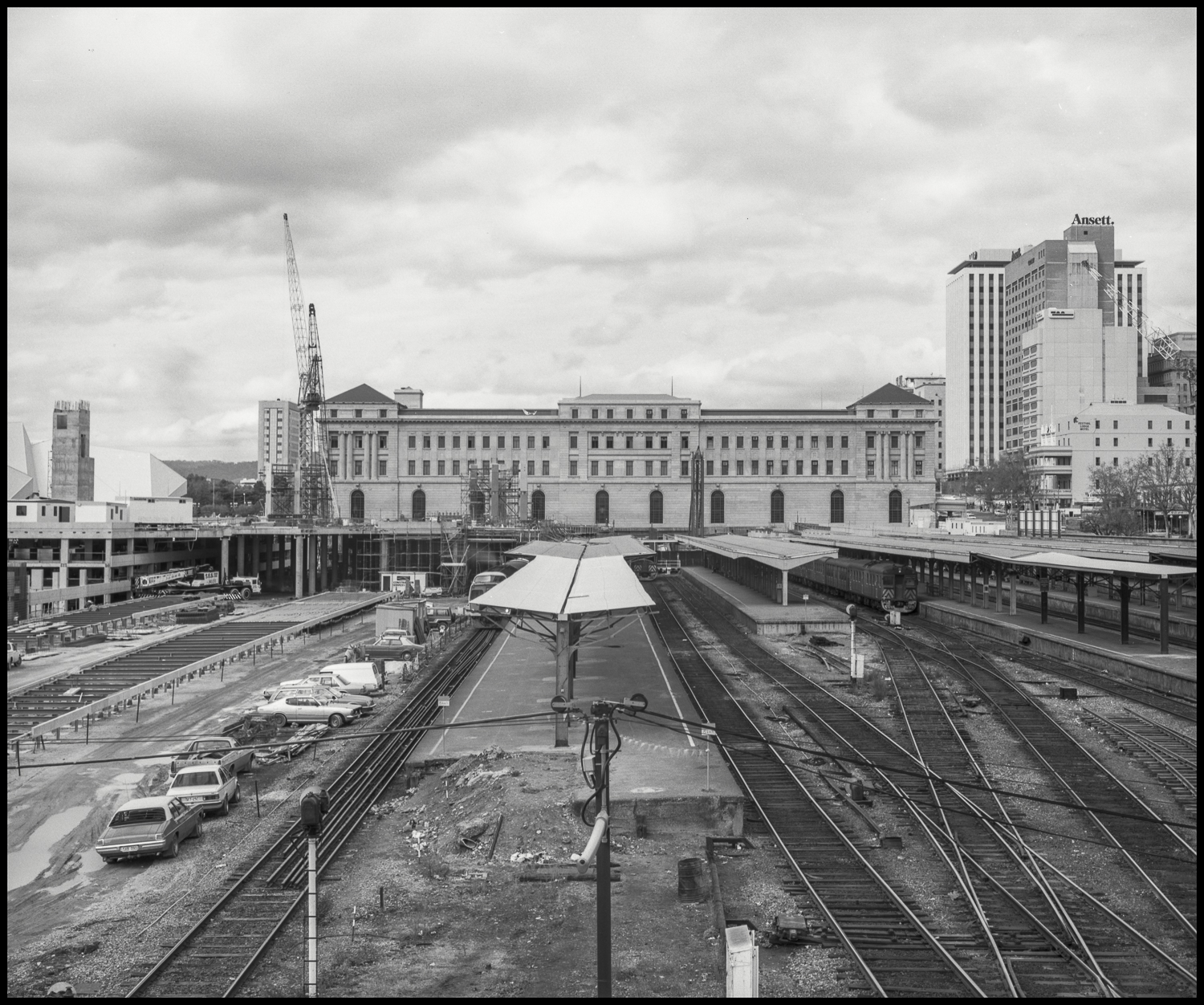The early 1980s in the anxious city of Adelaide saw the redevelopment of the Adelaide Railway Station precinct as a means to revitalise the city of Adelaide to address South Australia’s economic decline and high unemployment. The redevelopment was part of the building boom of the 1980s in South Australia that was characterised mainly by speculation in office development. The politics of the 1980s were the politics of development in response to deindustrialization. The national context was one of financial deregulation and its consequences notably the credit explosion, asset boom and corporate crashes which the new system spawned later in the 1980s.
The redevelopment of the Adelaide Railway Station precinct, the Adelaide Station and Environs Redevelopment (ASER), was first introduced for discussion in the 1970’s, but it was not begun until 1983. It was to provide a new tourism focus for the then called Festival State, ‘South Australia’.

The completed project consisted of the Adelaide Convention and Exhibition Centre, the Adelaide Casino and the 23-storey Hyatt hotel all built above the railway tracks which bring metropolitan rail services into the Adelaide Railway Station. This redevelopment in the form of global modernism was seen by critics as a direct assault on the form of the City of Adelaide, on the integrity of its boundary, and on the visual character of the parklands. Moreover, the commercial nature of the buildings did not contribute to civic purpose and they had no cultural value in relation to the parklands.
Situated near the Adelaide Festival Centre, the Hyatt hotel, which was opened in 1988, is now nestled between the existing Railway Station (housing the Adelaide Casino), the Adelaide Convention Centre and Exhibition Hall, Riverside office block and car parking facilities. In 2009, the hotel changed management companies and it currently operates as InterContinental Adelaide, part of the world-wide InterContinental Hotels Group.
The ASER project was an example of the ways in which political power was used to circumvent heritage and planning legislation during the Bannon decade.
The 1980s were prior to the recent incarnation of ‘creative cities’ as a policy provision for artist-led urban renewal in western cityscapes rapidly transformed by de-industrialisation and the continued expansion of suburban living. The end of the 80’s boom meant that Adelaide was a city in transition and/or crisis.

Leave a Reply